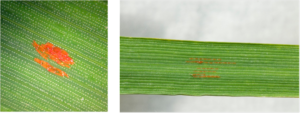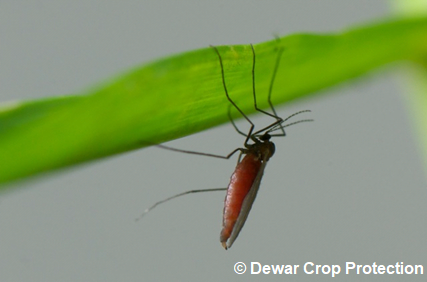Saddle gall midge – May 2020
25 May 2020Saddle gall midge is potentially a serious pest of continuous cereals such as wheat, barley and rye (but not oats), and has been seen in Scottish crops occasionally over the last few seasons.
Adult saddle gall midge should appear any day now and lay red eggs on the leaf surface in a line or grid following the leaf veins.
The red larvae burrow underneath the leaf sheaths feeding on the stem. The effect of feeding results in galls which can be seen as saddle-shaped depressions on the stem. The ‘saddle’ galls weaken the stems and restrict the flow of nutrients to the ear which can develop a `bleached` appearance. Where numerous galls have formed the stem can be damaged, to the extent that it breaks with the ear falling to the ground. Growers are advised to keep an eye out for the red/orange coloured midges in second and continuous cereal crops from late May and look at leaves for the presence of eggs.
As it tends to be a pest of 2nd or continuous cereals, a break from cereals is usually enough to significantly reduce the problem, as the adult midge does not fly very far. However, the larvae can persist in the soil for several seasons before emerging as midges, so a break crop is not a guarantee of breaking the cycle.
Sign up to the FAS newsletter
Receive updates on news, events and publications from Scotland’s Farm Advisory Service


